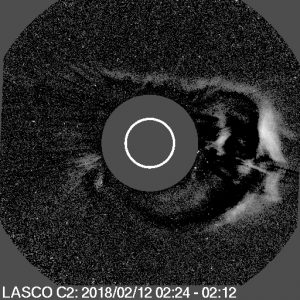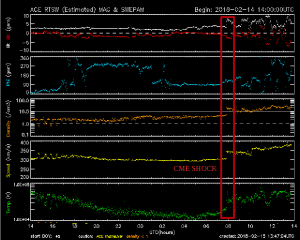

The solar storm that is impacting in these hours the terrestrial magnetosphere has been generate by a Coronal Mass Ejection (CME) detected at 01:25 UTC of February 12 by the LASCO instrument on-board SOHO satellite.
It is the first event of this type in 2018, and it is likely to cause evident auroras at high latitudes.
The CME prediction algorithm, realized by L’Aquila and Rome Tor Vergata University research groups, has forecast that the CME would impact at 90% probability at 9:00 UTC of February 15.

The shock front of the CME hit the terrestrial magnetosphere at 7:50 UTC of February 15. The event has been also registered by the geomagnetic station of L’Aquila University.
The CME prediction algorithm, running in the Space Weather services SWERTO and IPS, has been remarkably precise and it is, at present time, the only CME forecast available in Italy.
ACE spacecraft data are used to visualize the CME shock arrival.





More Stories
Symposium of Space Climate 9 (Nagoya, Japan)
3rd Italian Space Weather Community Meeting
The 17th European Solar Physics Meeting (ESPM-17)